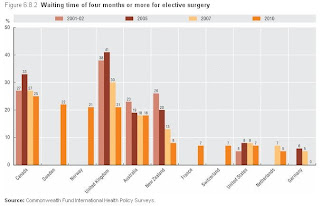In what should be an implicit advisory to the United States as geographically powerful ACOs become the norm, the UK Competition Commission has found that most patients in UK private hospitals are paying more than they should for treatment because of a lack of local competition.
CC Chairman and Chairman of the Private Healthcare Inquiry Group, Roger Witcomb said:
‘The lack of competition in the healthcare market at a local level means that most private patients are paying more than they should either for private medical insurance or for self-funded treatment.
"The lack of available and comparable information, often less than is available to NHS patients, also makes informed choices—which could help drive competition—for these patients difficult."
The BBC News summarizes that the financial results of this market power are clear:
Hospital groups BMI, Spire and HCA had been "earning returns substantially and persistently in excess of the cost of capital", the commission said.
How much does this amount to? The conservative estimate is £173 million to £193 million a year.
"No insurer has countervailing buyer power that can fully offset the market power of BMI, Spire and HCA," the commission's provisional findings said.
The commission recommended moves to make more information available about the quality of hospitals' services and the level of fees charged by consultants. [Note to US readers: "Consultants" = "doctors".]
It also suggested that operators owning a cluster of hospitals in one area should have to sell off some of them.
CC Chairman and Chairman of the Private Healthcare Inquiry Group, Roger Witcomb said:
‘The lack of competition in the healthcare market at a local level means that most private patients are paying more than they should either for private medical insurance or for self-funded treatment.
"The lack of available and comparable information, often less than is available to NHS patients, also makes informed choices—which could help drive competition—for these patients difficult."
The BBC News summarizes that the financial results of this market power are clear:
Hospital groups BMI, Spire and HCA had been "earning returns substantially and persistently in excess of the cost of capital", the commission said.
How much does this amount to? The conservative estimate is £173 million to £193 million a year.
"No insurer has countervailing buyer power that can fully offset the market power of BMI, Spire and HCA," the commission's provisional findings said.
The commission recommended moves to make more information available about the quality of hospitals' services and the level of fees charged by consultants. [Note to US readers: "Consultants" = "doctors".]
It also suggested that operators owning a cluster of hospitals in one area should have to sell off some of them.















